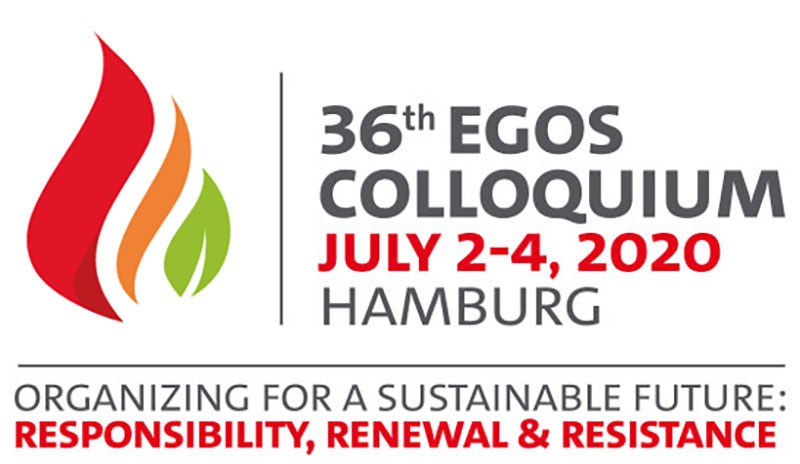Sub-theme 33: Multiple Lenses on the Complexity of Institutions
Call for Papers
Institutions are complex. They are norms, rules, and practices in forms of historically patterned cultures (Greenwood et
al., 2017; North, 1990; Powell & DiMaggio, 1991). They compose of organizations, individuals and actors of different roles.
Institutional theory is one of the well-established theories aiming to explain the complexity of institutions especially with
the recently emerged paradigms such as intuitional logics and institutional complexity (Greenwood et al., 2011; Thornton et
al., 2012). On the one hand, the theory of institutional logics explains how organizations and individuals’ logics
of behaviors and actions are shaped. On the other hand, complexity raises where different logics co-exist within an environment.
That is, heterogeneity is one of the central elements of complexity in institutions as early scholars such as March and Simon
(1958) also put forward.
Studying the complexity of institutions could be highly useful in order to understand
how institutions change and how isomorphism, new organizational forms and behaviors emerge. Nevertheless, it requires a multi-level
approach to capture the dynamics of change and emergence (Padgett, 2017; Padgett & Powell, 2012). If we define institutions
as some sort of norms, rules, practices, behaviors and actions, then they should be observed across field, organization and
individual levels.
To theorize and develop a better understanding of the dynamics of heterogenous (often
conflicting or inconsistent) and interacting logics, rules and norms, we want to to consider and triangulate a variety of
approaches, well rooted in the tradition of the social sciences (Cyert & March, 1963) and, in principle, complementary
with the epistemology of institutional theory. Despite the current research on institutional complexity, its dynamics are
clearly in need further investigations.
In this sub-theme, we call for papers aiming to study institutional
complexity through different methods such as, quantitative, experimental, simulations, qualitative and conceptual methods
used to capture complexity dynamics. Moreover, we acknowledge empirical settings related to timely phenomena such as sustainability.
A large component of such topics are essentially social phenomena that requires a complexity lens (Tainter, 2006, Wells, 2012).
With this intention, we hope to not only advance the current literature on the complexity of the institutions, but also to
understand the dynamics of the institutions behind timely issues such as sustainability and how those institutions can be
organized toward a sustainable future especially knowing the contradiction between commercial, ecological and social logics.
In particular, we look for papers aiming to study complexity in institutions across different levels – individuals,
organizations, and field while setting on sustainability and other related problems. Papers may take, but are not limited
to the following approaches:
Macro level: Field level complexity is centered while abstracting meso and micro levels. At this level, first, the conceptualization of institutional field is important. Then, scholars should investigate how such fields change over time based on meso and micro changes. At a macro level, theories such as institutional logics, categories, etc. can be helpful.
Meso level: Organizational meso-level complexity is centered while abstracting macro and micro levels. At this level, concepts such as hybridization, plasticity, dynamic capability, risk taking, cognition, entrepreneurial behavior, innovativeness, and imitation are helpful to understand how organizations change under micro and macro level pressures.
Micro level: Individual level complexity is centered while abstracting field and organizational levels. At this level, paradigms such as trust, authenticity, emotions, risk taking, cognition, decision making, and entrepreneurial behavior are useful in order to see how individuals either change under meso and macro pressures or how they contribute to the change at the meso and macro levels.
Multi level: Complexity at all levels is concerned. With a certain degree of abstraction at each level, scholars may develop a comprehensive model of institutional complexity, which connects all the levels using coherent theories. This allows for up- and down-wards causation mechanisms to be explored, highlighting emergence from complex adaptive organizational systems (Secchi & Neumann, 2016).
References
- Boxenbaum, E., & Jonsson, S. (2017): “Isomorphism, Diffusion and Decoupling.” In: R. Greenwood, C. Oliver, T.B. Lawrence & R.E. Meyer (eds.): The SAGE Handbook of Organizational Institutionalism, 2nd edition. Thousand Oaks: SAGE Publications, 78–99.
- Cyert, R.M., & March, J.G. (1963): A Behavioral Theory of the Firm. Englewood Cliffs: Prentice-Hall.
- Greenwood, R., Oliver, C., Lawrence, T.B., & Meyer, R. E. (2017). The SAGE Handbook of Organizational Institutionalism, 2nd edition. Thousand Oaks: SAGE Publications.
- Greenwood, R., Raynard, M., Kodeih, F., Micelotta, E.R., & Lounsbury, M. (2011): “Institutional Complexity and Organizational Responses.” Academy of Management Annals, 5 (1), 317–371.
- March, J.G., & Simon, H.A. (1958): Organizations. New York: John Wiley & Sons.
- North, D.C. (1990): Institutional Change and Economic Performance. Cambridge: Cambridge University Press.
- Padgett, J.F. (2017): “The Emergence of Organizations and States.” In J.N. Victor, A.H. Montgomery & M. Lubell (eds.): The Oxford Handbook of Political Networks. Oxford: Oxford University Press, 59–89.
- Padgett, J.F., & Powell, W.W. (2012): The Emergence of Organizations and Markets. Princeton: Princeton University Press.
- Powell, W.W., & DiMaggio, P.J. (1991): The New Institutionalism in Organizational Analysis. Chicago: University of Chicago Press.
- Secchi, D., & Neumann, M. (2017): Agent-Based Simulation of Organizational Behavior. New York: Springer.
- Tainter, J.A. (2006): “Social Complexity and Sustainability.” Ecological Complexity, 3 (2), 91–103.
- Thornton, P.H., Ocasio, W., & Lounsbury, M. (2012): The Institutional Logics Perspective. A New Approach to Culture, Structure and Process. Oxford: Oxford University Press.
- Wells, J. (2012): Complexity and Sustainability. London: Routledge.


